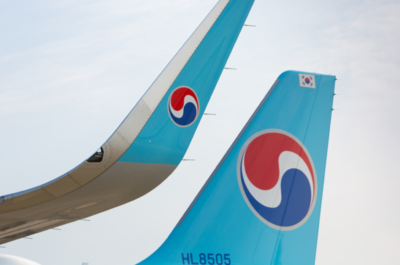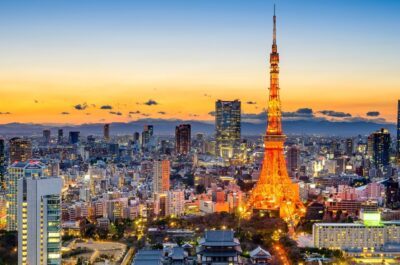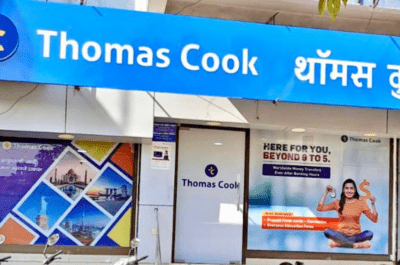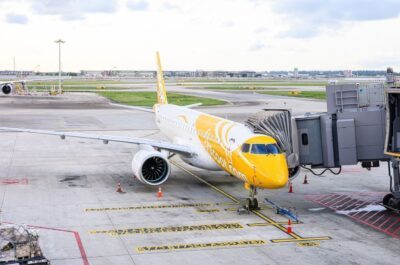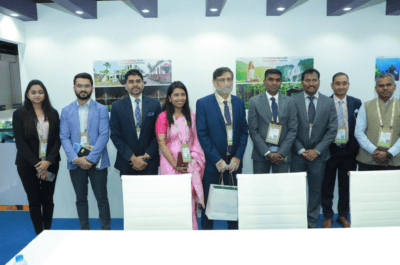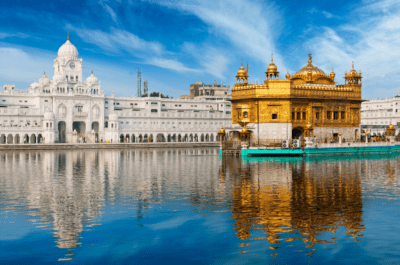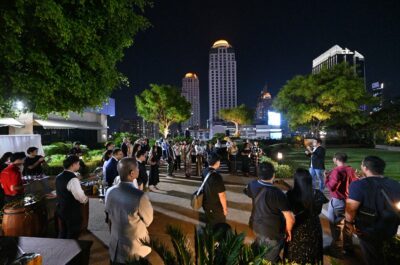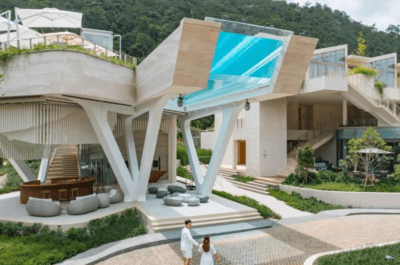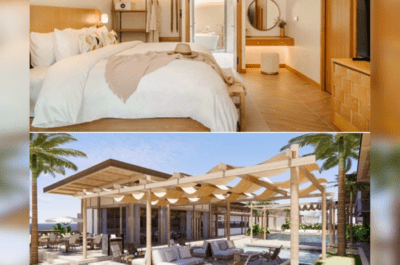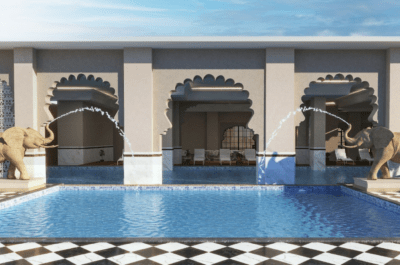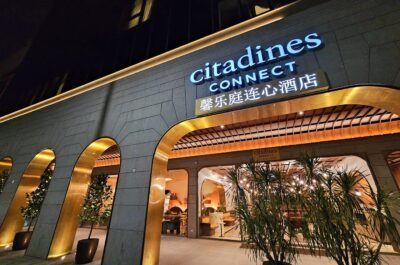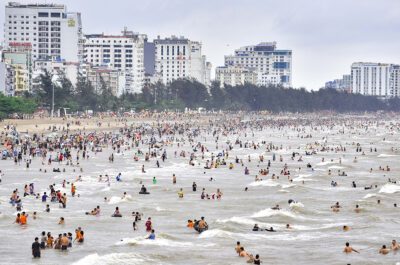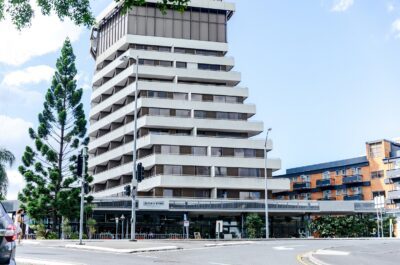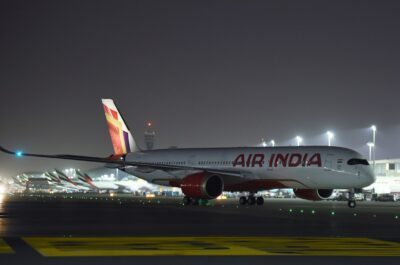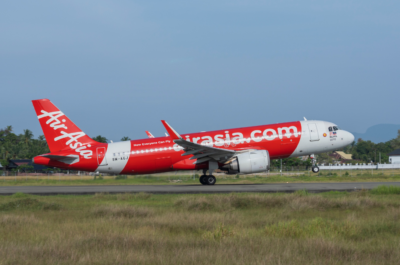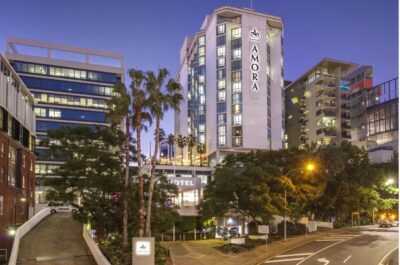…
The Indian tourism industry has performed well over the last eighteen months. Foreign tourist arrivals in 2004 touched their highest-ever figure of 3 million, and the size of the domestic tourism is presently estimated at 230 million. The outlook for the economy is positive; the government`s polices are perceived as investment friendly and, for the first time ever, domestic carriers can test foreign grounds. The hotel industry is on cloud nine, with hotels witnessing record occupancies and average rate growth. The macro economic outlook is expected to continue providing momentum for growth, and we expect demand for room nights across key commercial and leisure destinations across India to grow annually at an average of 16-20 percent over the next three to five years.
With 95,000 odd rooms in the country, the size of the hotel industry represents an abysmal figure for India`s size and growth prospects. Based on the forecasted growth in demand we expect that another 75,000 to 80,000 rooms will need to be added, across the country, in the next five years, to be able to meet the increase in demand. Our preliminary research indicates that, at best, there are currently only 35,000-40,000 rooms under different stages of planning and construction that are expected to enter the market in the next five years.
The recent boom witnessed by the hotel industry and the expected demand-supply imbalance has renewed the interest of many real estate enthusiasts in hotel development projects and the preferred positioning for a majority of projects seems to be luxury. Why the luxury segment? Because of a higher average rate, a better bottom line figure and better returns. Luxury hotels also attract a lot of attention and easily fit into the perceived business profile of individual developers, many of whom do not want to be seen associated with budget or economy products!
Luxury seems to be the buzzword as the high-end segment provides an opportunity to register windfall profits in the long run. Does this reflect an apt understanding of trends?
If I have to advise a potential developer on a wise entry strategy into a market that is so buoyant, I would say, Budget hotel with a mid-market orientation that offers value for money.
Why Budget? Well, let`s see…
In the next five years, the Indian hotel industry is expected to witness an acute shortage of room supply. The demand-supply imbalance will transform the market into a supplier`s market and this will, naturally, lead to a dramatic rise in rates in most cities. Companies will find rates prohibitive for the mid-level business traveler, forcing them to look for more cost-effective alternatives. IT majors in India like Infosys and Wipro are actively considering the development of guesthouses at their campuses in Bangalore. The mid-level traveler constitutes a key target market for most luxury hotels in commercial destinations and this segment also exhibits comparatively higher average length of stay patterns. Displacement of this business will be available for hotel with a mid market orientation that can satisfy the value for money principal. At some point in time macro economic factors and industry dynamics will present an optimum demand-supply balance and yields will be rationalized. Till such time, budget hotels will be able to operate at impressive occupancies, maximize yields through proactive rate management and build a loyal customer among niche markets like the non-negotiated commercial traveler, airline STPC and extended stay. Post rationalization, the rate adjustment factor will be comparatively lower for hotels with mid-market orientation and these hotels are expected to present a flatter, but more stable, growth trajectory over a long term period.
While there has been much talk about record number of foreign tourist arrivals, very little has actually been said or done about domestic tourism, which, according to our estimates, has registered 40 percent annual growth in the last three years and is currently estimated at 230 million travelers. The latest data released by the government of India shows that the country’s Per capita Income grew by an impressive 7.1 percent in 2003/04, while Gross Domestic Savings at current prices touched an all time high of 28 percent. Significantly, the present-day consumption boom in India has been influenced more by higher disposable income rather than lower savings.
This is good news, as income induced spending is likely to sustain itself for a longer period. Higher disposable incomes are also expected to enhance the concept of traveling for leisure. At existing hotel rates across key leisure destinations in India, travel to many far-east destinations is more economical than travel on domestic circuits. In such a scenario, a budget hotel offering comfortable accommodation and satisfactory food and beverage alternatives at affordable prices has much to gain from the domestic travel market. In my opinion, a hotel with mid market orientation and budget brand affiliation is better suited to cater to this all-important segment. Moreover, for any hotel, a greater dependency on domestic tourism also means more certainty and stability in terms of revenue: inbound tourism, undoubtedly, is strongly influenced by trends and developments, economic and otherwise, in the source countries as well as around the world in general. Dependency on foreign tourism can be a double-edged sword as travel decisions are based on global patterns and events that happen elsewhere can have serious impact on your performance. Post 9/11, post SARS outbreak, post Afghanistan and Iraq wars, and most likely post tsunami it is the domestic traveler that has been the saving grace of Indian hospitality industry and in my opinion a hotel with mid market orientation and budget brand affiliation is better suited to cater to this all important segment.
The non-availability of quality sites for hotel development has forced international brands keen to enter the Indian market to become more flexible in terms of their product specifications. Luxury brand operators and management companies seem willing to make adjustments in terms of certain preconditions and requirements, in order to be able to plant that all-important flag. Developers must, however, keep in mind that the overall development cost, and subsequent operational costs, associated with a mid-market product are far less than for a luxury product. When the demand-supply imbalance situation improves, which will improve once new hotels open, only those hotels that are planned and conceptualized to cater to the ideal business mix will be able to sustain themselves. While, based on recent performances and existing trends, there is a strong temptation to opt for luxury, budget developments, due to their inherent nature of operation, associated costs and flexibility, are better suited to withstand the next economic downturn as and when it takes place.
What India needs today is additional supply in room inventory that will ease the huge supply imbalance. The real requirement is for products that will offer value for money and which are customized to effectively cater to individual travel needs. The need of the hour is for developers to understand and access the true potential of certain key hotel markets, absorb the concept of budget accommodation, and incorporate a well thought-out development strategy.

The table above provides the average rate growth trends across key cities, highlighting that, over the last 24 months, most cities have witnessed impressive growth in average rate, due to strong demand and not much addition in supply. However, the potential to increase rates without displacing clients has almost peaked. With new hotels opening in these cities we expect to see a much-needed phase of rate consolidation. Thus, if you do not already have a hotel that is up and running and achieving an average rate of US$250, the safest basket to put your investment in is budget. The demand-supply imbalance indeed presents an ideal opportunity and is a boon for budget brands looking at India.
* About Mr. Siddharth Thaker
Siddharth, Consulting and Valuation Analyst joined HVS International, New Delhi in August 2004. Formerly, he worked as Revenue Manager with Le Meridien Hotels & Resorts at UAE, Tashkent and Kuwait. Prior to Le Meridien Hotels & Resorts, he worked with the Taj Group of hotels for two years. He has conducted feasibility and market studies and performed hotel valuations for major hotel chains and clients. Siddharth holds a MMS degree with specialization in advanced financial management and a Bachelors degree in economics and financial accounting from Bombay University
TravelDailyNews Asia-Pacific editorial team has an experience of over 35 years in B2B travel journalism as well as in tourism & hospitality marketing and communications.








